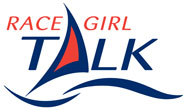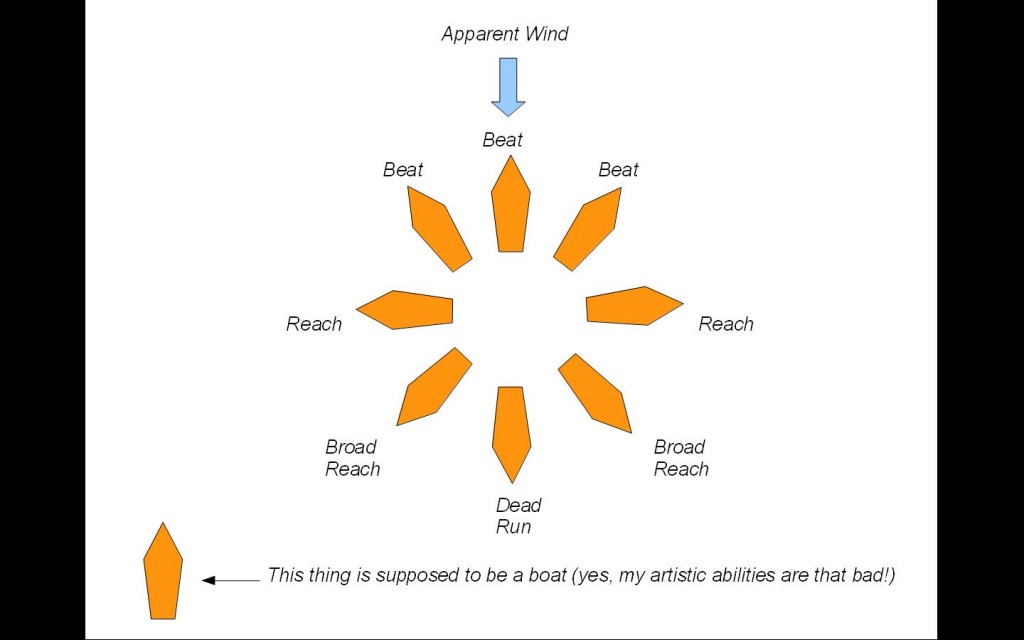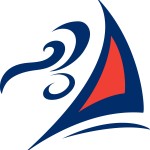Points of Sail
If you’re new to sailing, some of the words used to describe wind can be a bit confusing at first. Hopefully, this will help.
True Wind – This is just what it sounds like. True wind is the actual wind in the direction that it is coming from.
Apparent Wind — This is the wind that’s apparent to you. It’s the combination of the true wind with the boat’s velocity. That results in what the wind feels like on the boat.
Points of sail refer to the orientation of the apparent wind to the boat. A boat can not sail directly into the wind. In that case, the sails would just flap around. It’s called being “in irons.” If we think about the face of a clock, with the wind coming from tgwelve o’clock; being in irons would mean we were sailing straight at 12:00. As the boat moves clockwise or counter clockwise from the wind; there are beats, reaches, and runs.
In a beat the boat would be at 11:00 (starboard tack – wind is coming over the starboard side of the boat) or 1:00 (port tack – wind is coming over the port side of the boat) in realtion to the wind. Sailing on a beat is also called sailing close hauled (because the sails are hauled close in to the boat. In a reach the boat is at 9:00 or 3:00 in realtion to the wind. A broad reach is when the boat is at 4:00 or 7:00 in relation to the wind. In a run the boat is sailing opposite of the wind, or downwind. When the wind is coming from the 12:00 position and the boat is sailing straight toward 6:00; that is called a dead run.
Bearing away is also called falling off, or pointing lower. It means to turn away from the wind. Turning toward the wind cvan also be referred to as pointing higher or heading up.
Found this graphic sequence on YouTube and thought it gave another good way to think about points of sail. Hopefully, you will find it helpful too.


